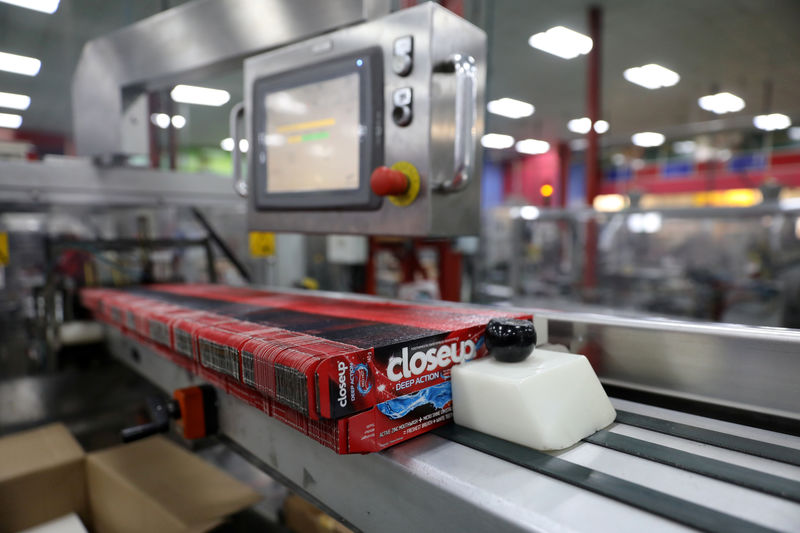TSX lower after index logs fresh record closing high
(Bloomberg) --
Inflation continues to brew in America’s industrial heartland as growing materials shortages cascade into record-long delivery times and leave manufacturers struggling to keep pace with an energized economy.
As producers attempt to navigate supply-chain pitfalls for the commodities necessary to produce their wares, wage growth is beginning to percolate. A recent Labor Department report showed the largest quarterly increase in worker pay at companies since 2003.
This combination of higher labor and materials costs will probably lead to a bigger pickup in consumer inflation at a time when monetary and fiscal policies are conducive to faster economic growth. Colgate-Palmolive (NYSE:CL) Co., food and beverage maker Mondelez International Inc (NASDAQ:MDLZ). and Kimberly-Clark Corp (NYSE:KMB) are among a growing number of companies raising prices.
While Federal Reserve Chair Jerome Powell says the central bank views the shortages in materials and supply-chain challenges as temporary, companies are saying the constraints will linger, possibly into 2022.
The Labor Department releases April inflation data on Wednesday.
The following charts highlight the latest developments in materials shortages, delivery times and wages:
Longer lead times are one of the clearest indications of the supply-chain challenges that producers face. Wait times of factories for production materials grew to 79 days in April, the longest in records dating back to 1987, according to the latest Institute for Supply Management data. The average delivery time of supplies for maintenance, repair and operations was also the longest in ISM data.
Such delays have inflated order backlogs to record levels and kept a lid on a breakout in production growth.
The ISM’s monthly reports also provide a clear indication of a growing number of commodities in short supply. In November, purchasing managers listed just 8 materials companies were struggling to get their hands on. Five months later and it’s expanded to 24.
While some things like personal protective equipment and gloves have been in short supply for months, others like aluminum, wood pallets and rubber-based products are new additions to the list.
Read more:
- Inflation Risk Intensifies With Supply Shortages Multiplying
- Global Inflation Debate Is Heating Up: New Economy Daily
- Shipping Delays, Shortages to Dog Firms All Year: Supply Lines
- Commodities Jump to Highest Since 2011 on Rebound From Virus
Meantime, companies largest cost -- labor -- is accelerating as the lifting of coronavirus restrictions leads to a broader pickup in economic activity.
The government’s latest employment cost index, a quarterly measure of compensation, showed wages in the private sector climbed in the first quarter by the most in 18 years.
Most economists prefer the ECI because, unlike average hourly earnings in the monthly jobs reports, the worker-pay data aren’t distorted by the compositional changes in employment that have been particularly severe amid the pandemic. The overall ECI, including government workers, registered the biggest increase since 2007.
Despite an elevated unemployment rate, many firms have cited troubles finding qualified workers. As a result, some are offering incentives like signing bonuses and boosting wages to attract applicants. Some 28% of small businesses reported raising compensation in a March survey by the National Federation of Independent Business.
Increasing vaccinations have also allowed more Americans to head back to their favorite restaurants or begin traveling again. For service providers, that means hiring more workers. That will only increase amid projections for a wave of pent-up demand.
But it’s been challenging to attract workers, which may reflect lingering child care obligations and enhanced unemployment benefits. The more generous jobless insurance and two latest rounds of pandemic-relief checks have given some workers the opportunity to be more selective about which job they take.
These factors may help explain a big increase in first-quarter wages for service providers. The 1.3% gain was the largest quarterly gain in two decades of record keeping.
©2021 Bloomberg L.P.
